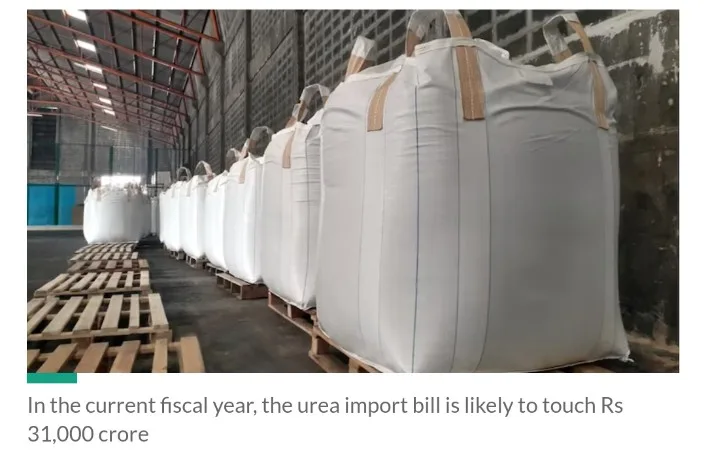In a strategic move to cut down the urea import bill, the Finance Ministry targets a substantial one-third reduction to Rs 21,000 crore in the fiscal year 2024-25. This initiative is propelled by the government’s emphasis on promoting alternative fertilizers like nano urea and urea gold, contributing to the containment of the total fertilizer subsidy next year.
The current fiscal year witnesses the urea import bill reaching an anticipated Rs 31,000 crore, making the reduction to Rs 21,000 crore a significant objective for the coming financial year.
Market Development Assistance (MDA) and nano urea are at the forefront of the government’s strategy. With the promotion of alternatives such as nano urea and organic fertilizers, the Finance Ministry is likely to allocate Rs 20,000-21,000 crore for urea imports in FY25.
Urea, constituting 55-60 percent of the total fertilizer consumption, relies on imports and domestic production. The urea subsidy scheme ensures a steady supply to farmers at a fixed price of Rs 242 per 45 kg bag, excluding taxes and neem coating charges, although the actual cost is approximately Rs 2,200 per bag.
The Union Cabinet’s approval of schemes on June 28, 2023, focuses on revitalizing soil productivity and promoting environmental sustainability. The Market Development Assistance scheme, with a total outlay of Rs 1,451 crore over three years, encourages composting in cities and the use of alternative fertilizers.
Strengthening the Nano Urea Eco-system:
Liquid nano urea, developed through nanotechnology, emerges as a cost-effective and efficient nitrogen fertilizer. By 2025-26, eight nano urea plants are projected to be commissioned, substantially reducing the import of granular urea.
Urea Gold Initiative:
The introduction of sulphur-coated urea (Urea Gold) proves to be both economical and efficient, saving input costs for farmers and boosting incomes. It aims to enhance production, productivity, and overall farmer well-being.
Urea Manufacturing Boost:
The setup and revival of six urea production units across various states contribute to the increase in urea production capacity in the country. Indigenous production has witnessed growth from 225 lmt during 2014-15 to 284 lmt in 2022-23, mitigating import dependency on urea expectedly in FY25.







